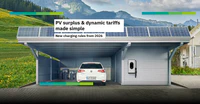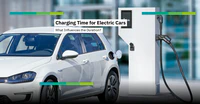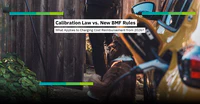A company car with a plug is convenient – but how do you actually separate private and business charging sessions at a home wallbox that runs only through a private electricity meter? This is a question many companies and employees integrating e-mobility into their daily lives are asking. The answer lies in a combination of technology, transparency, and smart billing.
Why Separation Is So Important
Charging a company car at home incurs electricity costs – and of course, these need to be billed correctly. An energy meter installed before or inside the wallbox can be helpful. But without a clear separation between private and business use, things quickly become confusing. For companies, this means: tax risks, lack of transparency, and high administrative effort. For employees: uncertainty about whether they will be reimbursed for their costs.
In Germany, there’s another important aspect: calibration law (“Eichrecht ”). It requires that measurement and billing systems used for passing on electricity – for example, from employer to employee – must comply with calibration regulations. This means the recorded charging amounts must be tamper-proof, traceable, and verifiable by third parties. Only then is legally compliant reimbursement possible.
So, anyone who wants to bill home charging sessions – whether employer or employee – must ensure that either a calibration-compliant wallbox, a MID -compliant meter (if only the company car is charged), or a suitable billing system (e.g., with certified meter and tamper-proof data transmission) is in use.
Download our charge@home Guide now!
Our guide highlights the requirements for a home charging solution and explains what is needed to use it for legally compliant billing of company cars. Learn more about the installation of wallboxes, legal frameworks, and efficient billing solutions for home charging.
REQUEST GUIDE
Three Charging Locations – Three Requirements
Charging typically occurs in three locations:
At the company site : Billing is usually straightforward, as the infrastructure is company-owned.
On the road: Public charging stations can be tracked via fleet cards or apps.
At home : This is where it gets complex – because private and business use are mixed.
Legal Framework: What Does the Tax Office Say?
According to §3 No. 46 of the German Income Tax Act (EStG), free or discounted charging of company and private vehicles at the employer’s premises is tax-free. However, this does not apply to home charging – here, only the expenses for charging the electric company car can be reimbursed tax-free. A correct, verifiable billing is crucial. The tax office accepts either flat-rate expense reimbursements or calibration-compliant individual records.
Technically Permissible Solutions for Separation in Germany (Calibration-Compliant)
| Solution | Description | Advantages / Disadvantages |
|---|---|---|
| Calibration-compliant wallbox | The wallbox itself is certified according to MessEG/MessEV and can record and document charging sessions in a calibration-compliant manner. | Legally secure for private & business useDirect integrationHigher purchase costNot all wallboxes support user separation |
| MID meter (for business use only) | The wallbox itself is certified according to MessEG/MessEV and can record and document charging sessions in a calibration-compliant manner. | Legally secure for private & business useDirect integrationHigher purchase costNot all wallboxes support user separation |
| Retrofit solution with Charge Repay Service | Adds retrofit hardware to an existing (non-calibration-compliant) wallbox, enabling calibration-compliant billing. | Uses existing infrastructureAutomated, transparent billingIdeal for mixed use (private & business)One-time setup required |
Conclusion: Separation Builds Trust
Separating private and business charging sessions is not a “nice-to-have” – it’s a must, both from a tax and legal perspective. Especially in Germany, where calibration law sets clear requirements for electricity billing, a clean separation is essential.




